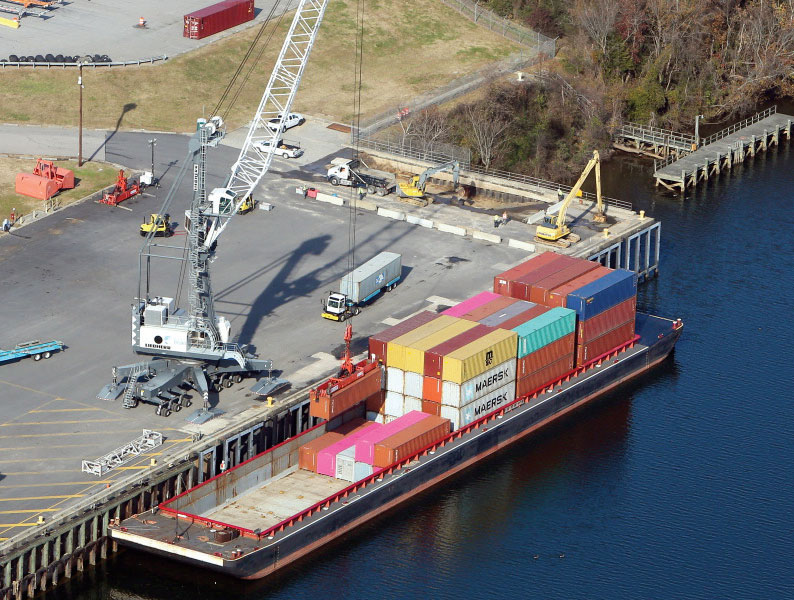Page 1: Barging Burgeoning
Page 2: Terminals Expanding
Page 4: Channel Work Beginning
Page 5: ‘Competitive as All Get-Out’
With enhanced terminal infrastructure and efficiencies and construction under way to bring channel depth to 55 feet – the most among U.S. East Coast maritime gateways – The Port of Virginia clearly is putting out the welcome mat for cargo business.
John F. Reinhart, entering his seventh year as the Virginia Port Authority’s chief executive officer and executive director, told AJOT he is enthused not just by record volumes moving across Virginia docks in 2019 but, moreover, is encouraged by prospects for an even brighter future.

In addition to expectations of having the deeper channel in place by 2025, Reinhart pointed to recent developments including heightened terminal efficiencies for both truck and rail moves; expanding temperature-controlled cargo capabilities, including via growing Richmond barge service; and a new agreement to bring offshore wind energy cargos through the port.
“We’re doing more, faster, more efficiently, safer, with the capacity to continue to grow,” said Reinhart, who, prior to taking the helm at the VPA in February 2014, served 23 years with Maersk operations, including 14 years as chief executive officer of Maersk Line Ltd. “To me, the whole deal is a tribute to the men and women who work across the board.
“The Port of Virginia is thrilled with the execution of our strategic plan by our team,” said Reinhart, who last year was inducted into the International Maritime Hall of Fame. “We have modernized and doubled the size of Virginia International Gateway. We’re 80 percent through on doubling and modernizing South NIT [Norfolk International Terminals]. And we are in the water as of Dec. 1 dredging to have the deepest, widest channels on the East Coast.
“We’re very thrilled with the way the execution is coming along, improving our service, improving our capacity and making us a safe harbor and an easier port to do business with,” he added.
Barging Burgeoning
Not only are The Port of Virginia’s four terminals in the Hampton Roads area flourishing, with total container volume in calendar 2019 reaching a record 2.93 million 20-foot-equivalent units, but so, too, is barge activity along the James River.
“We’ve grown our barge program to Richmond Marine Terminal by just under 20 percent last year,” Reinhart said, “and we have a new transloading facility right there at RMT to take agricultural product and load it into containers and put them back on the barge.
“We are taking the imports up and are bringing loaded agricultural product back,” he continued. “We see that as just a wonderful use of the facility, in getting the two-way traffic, and we see that business adding double-digit growth again this year.”
Agricultural product on the barges now is mostly soybeans, with potential for also handling wheat. With the new trade agreement with China taking effect, Reinhart sees opportunity to have a lot more agricultural product – including soy, wheat, pork and poultry – being exported from Virginia to China.
“We look at that two-way traffic and that increase of the export commodities as being very accretive to our growth this year,” he said. “Obviously, we’re all watching China and the coronavirus very carefully because of what it may do to the country and manufacturing and trade for the near term and the devastation it’s creating with the Chinese people.”
In January, the RMT reefer service got a further boost with announcement of a $189,840 federal grant to be used toward buying another large portable generator and additional related equipment to be deployed on the second barge that was brought into the service in 2019, facilitating moves of refrigerated containers containing agricultural products on both barges.




